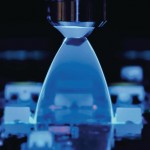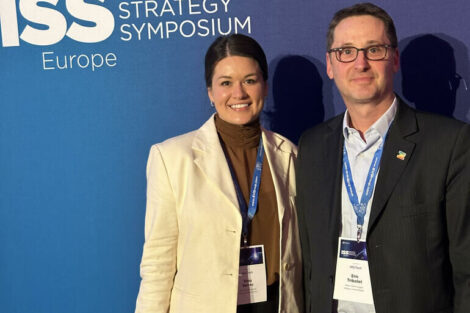The subject „discharge of VOC emissions“ continually lands on the desks of the respective process owners, combined with the requirement for reduction of these emissions. New stricter requirements can also impact new installations of coating lines, layout changes or modifications to existing coating lines. Both external legal provisions (BImSchG) as well as internal environmental requirements such as ISO14001 are also further drivers of this discussion. As we move forward, the conservation of our environment continues to drive change resulting in having to consider the possibility of reducing VOC emissions on new projects.
Stannol GmbH, Wuppertal (Germany)
Whether it is now the European VOC Directive or the continuous expansion of the SVHC list according to the European Chemicals Regulation, it is becoming increasingly difficult to comply with all regulations. The European VOC Directive 1999/13/EC in the currently adopted and amended version refers to larger plant technology – a lot of coating must be used here before having to act, document and reduce in accordance with this directive. But how long will that only be applicable for areas with emissions of more than 5t of VOC per year?
This reduction can of course also be approached using plant engineering via extraction and separation with connected solvent incineration or return of the VOCs linked with investments for the improvement of existing not environmentally friendly systems. Why not then invest directly in future-proof coating technology?
The constant additions to the SVHC list according to the European Chemical Regulation as well as the increasingly more critical concerns with certain solvents such as toluene are resulting in it becoming increasingly more difficult to introduce solvent-based conformal coatings. Therefore, the use of so-called Zero-VOC or Low VOC conformal coatings must be considered and checked for the launch of new coating processes and procurement of new plant technology. Such alternatives are provided in roughly these 3 groups which should be shown in more detail below:
- Water-based conformal coatings
- Silicone conformal coatings with „100% solid content“
- UV-hardening conformal coatings also with „100% solid content“
Water-based conformal coatings:
One of the major advantages of water-based conformal coatings is that these also maintain their protection function of the electronic assemblies for increased temperature ranges – in direct comparison with solvent-based coatings. The water-based coatings behave very similarly to many conventional conformal coatings for the chemical and physical protection effects such as dielectric strength, SIR and similar.
An increased drying temperature or also slightly extended drying time should be calculated in the processing of water-based conformal coatings. The possible bottleneck in the respective application case must be precisely considered based on various parameters such as coating, layer thickness, available drying equipment. The fact is that water has a higher evaporation rate than most solvents currently used and therefore requires increased energy input for the evaporation.
The components of the coating are not water-soluble; a suspension must be created for these coating systems. The viscosity can only be modified in a narrow band as each addition of water can adversely affect this sensitive suspension. Therefore, water-based conformal coatings are always supplied ready for processing. It must be ensured for the transport that the coating does not drop below a temperature of 0 – 4°C. The suspension can be destroyed if the coating is stored or transported in this range. On the other hand, a water-based conformal coating is not flammable and therefore not a hazardous product. It can thus be transported and stored at a reasonable cost. Unpleasant odours in the production areas are also drastically reduced due to the water as solvent. The overall assessment of any workplace exposure to solvents with risks can be significantly simplified by using water-based conformal coating.
Alternative Zero-VOC conformal coatings – 100% solid:
The „100% solid“ designation for a liquid conformal coating is somewhat misleading. It only means that all of the liquid cross links 100% with the solid conformal coating. These conformal coatings are roughly divided into two groups:
- organic polymers
- inorganic silicones
Conformal coatings with 100% solid content can be hardened using various methods: UV light, heat or humidity. A combination of the methods mentioned is also possible.
Silicones:
The silicone-based conformal coatings are based on silicon chemistry, usually harden using humidity or thermally and are included in the „100% solid“ conformal coatings. For conformal coatings, they show very high thermal resistance up to 200°C and are also highly flexible when hardened which ensures low mechanical loads of the solder joints. Silicones show good protection against liquid water; however they can absorb more water in vapour form due to the coarse porosity. The mechanical load capacity is not particularly high. The surfaces on which silicones are applied should also be well pre- treated.
Hardening using UV light:
UV-hardening conformal coatings based on classic polymer chemistry are also included in the group of „100% solid“ conformal coatings. They contain almost no solvents and have excellent chemical and thermal resistance up to 150°C continuous operating temperature.
A sufficient dose of UV light with the correct wavelength is required for the hardening. The hardening is then performed in the core range of the UV light within seconds. However, as this is a populated assembly of a 3D structure with shadow areas, e.g. under components, the necessary second hardening mechanism for these shadow areas is realised via hardening using humidity. Depending on the coating, this is performed afterwards at room temperature. Due to the almost electrically inert characteristics of the still liquid coating, the coated assemblies can be further processed directly after UV hardening.
The first generation of UV-cure conformal coatings had shoown some potential issues that could occur under certain conditions during the many different release testing. Increased tendency for crack formation, particularly in areas where the conformal coating developed increased film thickness, e.g. in the menisci of the components and thus unfortunately also often in areas particularly needing protection. Coating adhesion and wetting of the liquid coatings were also not always well developed on uncleaned assemblies.
Particular attention to and advancement and optimisation of these points have been made during the development of the current second generation of UV-Curing conformal coatings. This has resulted in two very different products that, on the one hand meet most requirements for processing with different viscosity settings and on the other hand show very different protection characteristics.
While the coatings of the UV50 series can be seen as the successors to the UV40 series, the UV500 family is a completely new development which had not been made possible until new raw materials from polymer chemistry had been available in recent years. The UV50 focused on the reduction of the crack formation for automotive technology applications and the associated requirements for thermal shock tests. For continuing very high chemical resistance, the wettability has also been specially optimised for uncleaned assemblies.
In contrast, the UV500 has a somewhat different focus due to the new type of polymer chemistry: High thermal load capacity with outstanding wetting, coating adhesion and flexibility of the film. Due to the high flexibility of the cured coating, the mechanical influence of the coating on components and solder joints is very greatly reduced. The coating does not introduce additional load on the durability of the solder joints. The chemical resistance is not entirely comparable with that of the UV50; however, it ensures easy repairability of the assembly. The protection against condensing humidity is just as high as for many conventional coating as well as displaying high electrical load capacity and reliability.
Summary
Responsible use of our environment concerns us all and will continue to be the focus in all manufacturing in the future. The fear of additional financial burden is, of course, a significant criterion but if the subject is approached correctly, dispensing with solvents in the conformal coating area can be realised with neutral effect on costs. Depending on the conformal coating and curing method, investments in new curing systems are in fact necessary, but the entire coating area must be included in a realistic calculation: How much thinner must be purchased and stored for conventional coating? What does the continuous operation of a drying section at 80°C cost in comparison with UV hardening in 15 – 30 seconds? What are the costs for electricity, maintenance, repairs and cycle times of your products?
Time and cost. Selecting the correct conformal coating for the current application always pays off by drastically reducing the failure rate of your products. The absence of solvents from any conformal coating is usually only the smallest criterion that a coating must fulfil. Therefore, that is a point that should be included in your requirements specification – this point can always be deleted if important technical reasons conflict with it! The high quality of your products in combination with responsible use of our environment ensure that your customers and not the product come back!
zusammenfassung
Der verantwortungsvolle Umgang mit unserer Umwelt geht uns alle an und wird in allen Fertigungen zukünftig weiter in den Fokus rücken. Der Artikel beschreibt, wie man richtig an diese Thematik herangeht, damit der Verzicht auf Lösemittel in den Lackierbereichen kostenneutral realisiert werden kann.
La démarche responsable envers notre environnement est une affaire qui nous concerne tous et à l’avenir, elle sera de plus en plus en point de mire dans toutes les fabrications. Cet article décrit comment avoir une approche correcte de ce sujet afin que le renoncement aux produits solvants dans le domaine des vernis puisse intervenir de manière neutre en ce qui concerne les coûts.
Share:












